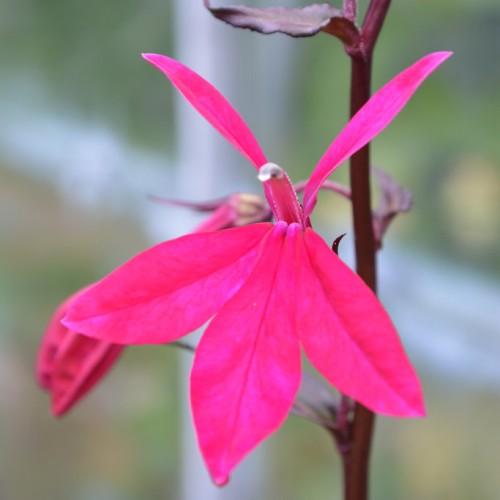
lobelia
Lobelia speciosa
Cycle:
Herbaceous Perennial
Watering:
Frequent
Hardiness Zone:
5 - 8
Flowers:
Flowers
Sun:
Full sun,part shade
Leaf:
Yes
Growth Rate:
High
Maintenance:
Low
Poisonous To Pets:
Yes
Salt Tolerant:
Yes
Invasive:
Yes
Care Level:
Medium
watering
Lobelia speciosa (commonly known as 'Lobelia') is a beautiful and showy flowering annual that prefers moist soil and can tolerate wet soil. Watering Lobelia plants is important to ensure they stay healthy and bloom abundantly. In the summertime, Lobelia plants should be watered regularly, usually every 1-2 days. In the wintertime, Lobelia plants should be watered less often, usually every 5-7 days, depending on the temperature and amount of sunlight. Make sure to water your Lobelia plants in the morning so they can dry before nightfall. If the soil becomes too dry, Lobelia plants may begin to wilt and their leaves will start to turn yellow and drop off. On the other hand, if the soil is too wet for too long, the plants' stems and leaves can become soft and limp, eventually leading to rot and plant death. If the soil becomes too wet, it's best to let it dry or reduce the amount of water that's being applied. Overall, Lobelia plants generally require more water in the warmer months and less in the cooler months. With some experiences and observation, it's relatively easy to figure out just the right balance.
sunlight
Lobelia speciosa plants require at least 5 hours of direct sunlight each day in order to thrive. While they can tolerate some shade, they still need at least 5 hours of direct sunlight. The best time of day to provide this sunlight is in the morning, just after sunrise. This allows the Lobelia speciosa to absorb energy needed for photosynthesis during the peak of the sun’s intensity while still giving them a chance to cool off in the evening shades towards sunset.
pruning
Lobelia (Lobelia speciosa) should be pruned in late winter or early spring, when the plant is still dormant. Remove any dead or damaged stalks and stems and prune back any sideshoots by half their length, leaving the central leader intact. This helps prevent the plant from becoming leggy and encourages a bushy growth. In the spring, cut any tall flower stems down to the lowest set of leaves. Deadhead the spent blooms to encourage re-blooming. Generally, Lobelia should not require any other regular pruning.
